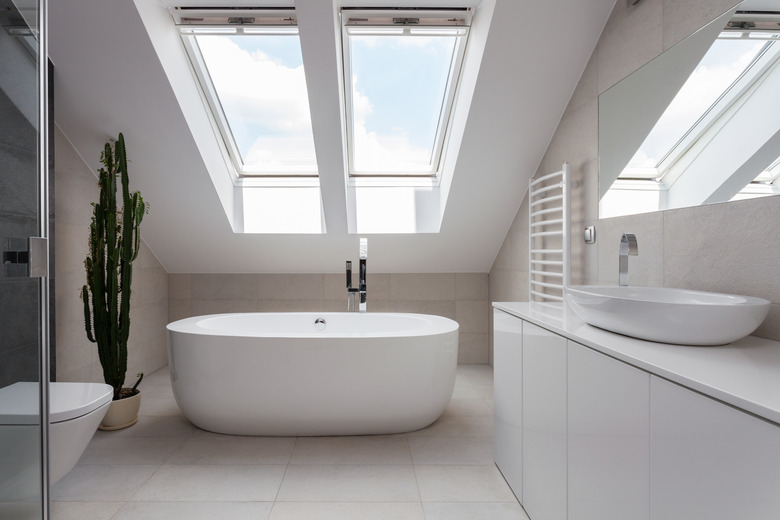What Is The Difference Between Glazed Porcelain Tile & Through-Body Porcelain Tile?
Buying tile can be a complicated process, especially when ceramic and porcelain and glazed and unglazed tiles are all essentially made from the same thing: kiln-fired clay. However, just like ceramic and porcelain tiles both have distinct uses based on the fact that porcelain is significantly harder, more water resistant and sturdier, glazed and unglazed (also known as through-body) porcelain tiles also have unique benefits that make them more or less appropriate for specific purposes.
Glazed vs. Non-Glazed Tile
Glazed vs. Non-Glazed Tile
When it comes to tile, it doesn't matter if something is shiny or glossy, but when determining whether it is glazed, it does matter whether or not it has had a layer of enamel or liquid glass applied to the surface before use. Most of the tiles people have in their homes are glazed, whether the surface looks matte or glossy.
Porcelain tiles are a type of ceramic tile made from porcelain clay or a mixture of porcelain clay and other materials. The materials are then kiln-fired either with a glaze on top or without. The glaze must be applied when the tile is first fired, as it fuses to the tile while it is in the kiln.
Through-Body Porcelain Tile Characteristics
Through-Body
Porcelain Tile Characteristics
Unglazed porcelain tile is colored by the mineral deposits in the natural clay used in the making of the tile or through the addition of other natural pigments to the clay. These pigments can be designed into a pattern that will run through the entire tile, which is why such tiles are known as "full-body" or "through-body" porcelain tile since the body color is universal from top to bottom.
These tiles tend to have an earthy, natural appearance because the colors are from the natural clay and pigments used to create the tile. While all porcelain tiles are more water resistant than comparable ceramic tiles (they have a water absorbency rate of less than 0.5 percent), unglazed tiles lack a protective coating and can absorb liquid, which leaves them vulnerable to staining. For this reason, full-body tiles must have a protective sealant applied to them periodically to protect their coloring. Glazed tiles are nonabsorbent by nature and never need to be sealed.
One of the most popular commercial brands of through-body porcelain tile is Porcelanosa Urbatek.
Glazed Porcelain Tile Characteristics
Glazed Porcelain Tile Characteristics
The coloring of glazed porcelain tiles can vary much more drastically than through-body tile because both natural or artificial coloring can be used in the glaze. They can also have more detailed patterns, as these can be applied in any number of ways on the glaze. The finish of the tile can also vary more since these tiles can come in matte, unglazed or high-polished varieties, allowing homeowners to choose how shiny they want their floors to be.
Glazed porcelain has the benefit of a protective coating over the top of the tile. This makes the tile stain resistant. However, because the color is often only on the glaze covering the surface, if they are chipped or worn down through heavy use, the difference in color may be noticeable. While many glazed tiles are glazed in a color that matches the underlying tile in order to prevent these problems, any patterns on the tiles will not appear below the glazed layer, so if the glaze is chipped or worn off, the pattern will be ruined. This is why unglazed tiles are preferable in particularly high-traffic areas.
